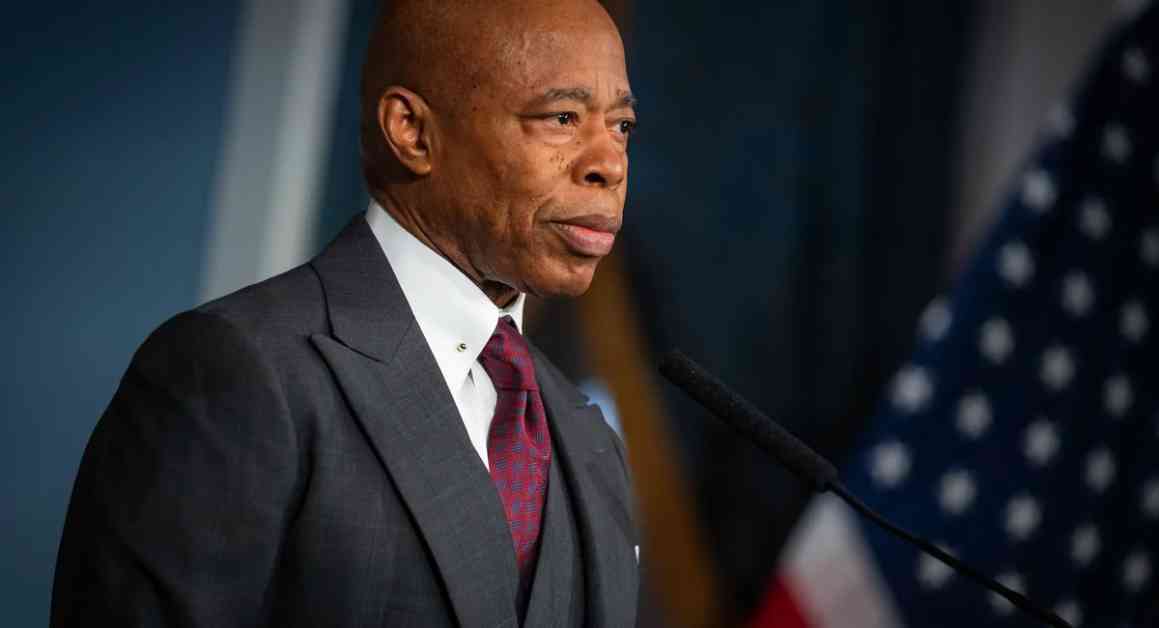Mayor Eric Adams unveiled a significant shift in policy on Thursday, revealing his intention to issue an executive order that would grant U.S. Customs and Immigration Enforcement (ICE) officers access to Rikers Island. This decision follows a meeting with Tom Homan, President Trump’s “border czar,” where the plan was set in motion. The move is poised to allow ICE agents to collaborate with the correctional intelligence bureau on criminal investigations, with a specific focus on violent criminals and gangs. This marks a departure from a 2014 bill that prohibited ICE from establishing an office on Rikers Island, as well as any cooperation between DOC officers and ICE unless an individual has been convicted of a serious or violent crime.
Concerns surrounding the executive order have sparked debate and garnered a range of responses from various stakeholders. Council Member Robert Holden commended Mayor Adams for taking this initial step, emphasizing the need for further action to demonstrate a commitment to public safety. Conversely, Gale Brewer, a member of the City Council’s immigration committee, expressed reservations about the implications of allowing ICE presence at Rikers Island, particularly given that the majority of detainees are awaiting trial and have not been convicted. Brewer underscored the potential risks faced by individuals who may be subject to ICE enforcement without due process, advocating for a warrant-based approach to maintain civil liberties.
Murad Awawdeh, the president and CEO of the New York Immigration Coalition, voiced strong opposition to Mayor Adams’ decision, characterizing it as a departure from the city’s longstanding sanctuary laws and policies. Awawdeh cautioned that such actions could erode the fundamental rights and safety of all New Yorkers, emphasizing the importance of upholding sanctuary principles to safeguard the community at large.
Amidst these developments, the broader context of immigration enforcement under the Trump administration warrants consideration. Since Trump’s return to office, immigration arrests have surged nationally, averaging approximately 626 per day in the initial weeks, a notable increase from the figures recorded in 2024. Despite these trends, ICE has yet to release specific arrest data for New York or other jurisdictions, leaving questions about the localized impact of heightened enforcement measures.
As the discourse surrounding the executive order unfolds, it underscores the complex intersection of immigration policy, law enforcement practices, and community welfare. The decision to allow ICE access to Rikers Island signifies a pivotal moment in Mayor Adams’ administration, prompting reflections on public safety priorities, civil liberties, and the broader implications for New York City’s diverse population. In navigating these intricate issues, stakeholders across the spectrum will continue to engage in dialogue, advocacy, and deliberation to uphold constitutional rights and protect vulnerable communities from undue harm.
In the midst of evolving immigration policies and law enforcement dynamics, the forthcoming executive order stands as a testament to the intricate balance between security imperatives and human rights considerations. As New York City grapples with these complex challenges, the path forward remains uncertain yet ripe with opportunities for dialogue, collaboration, and advocacy to shape a more equitable and just future for all residents.












